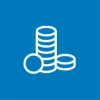The term "down payment" refers to an amount of money paid out of a homebuyer’s personal wealth towards a property being purchased through a mortgage.
In other words: The difference between the purchase price of the home being mortgaged and the amount borrowed as a home loan will be made up by the down payment.
In Switzerland, a down payment may include savings (from a private bank account or savings account, for example), securities, Swiss third pillar pension fund assets, insurance policy surrender payouts, non-interest-bearing loans which you aren’t obligated to repay, gifts and inheritance advances.
Assets that have been accumulated in an employer funded retirement account (Swiss second pillar) may sometimes be appropriated towards a down payment. However, this is not always the case, and there are limitations.
Bank or insurance companies which finance mortgaged properties set minimum down payments for property buyers. The minimum down payment amount is presented as a percentage of the property’s collateral value, and this percentage may vary between lenders.
Most lenders will not consider a mortgage with a down payment of less than 20% of collateral value. So the loan-to-value ratio normally cannot exceed 80%.
The Swiss banking guidelines issued in 2014 recommend a minimum down payment of 10% of a property’s collateral value. Assets from an employer-funded retirement account (Swiss second pillar) cannot be used to make up this minimum.
On top of that, Swiss banking guidelines require possible differences between the purchasing price and collateral value (in this case the property’s market value) to be fully covered by a down payment «which does not include assets from a second pillar retirement account» (take a look at example 2).
Down payment: example 1
The purchasing price and market value of a home are identical, at 1 million francs. The bank requires a 20% down payment from the homebuyer, who possesses 100,000 francs in savings and 100,000 francs in a second pillar retirement account (Swiss employer-funded pension fund).
So the buyers total assets come to 20% of the home’s purchasing price. This means the homebuyer’s down payment makes is sufficient to obtain an 800,000 franc home loan. Because the down payment covers 10% of the purchasing price without the help of retirement fund assets, it meets the eligibility requirements set by Swiss banking guidelines.
Down payment: example 2
The purchasing price of a home comes to 1 million francs, but the home’s market value rests at just 800,000 francs. Its collateral value is set at 800,000 francs (the lower of purchasing and market prices).
The bank expects the homebuyer to come up with a 20% down payment. In this case, 20% * 800,000 francs = 160,000 francs. The difference between the home’s collateral value and the down payment would determine the highest possible home loan that could be granted, or 640,000 francs.
So in addition to the 160,000 franc down payment on the home loan, the homebuyer would have to put down a large additional down payment to cover the full purchasing price of 1 million francs. Those are the requirements set by Swiss banking guidelines for home purchases where the purchasing price of a property exceeds its collateral value.
Following these guidelines, the homebuyer would need to cough up an extra 200,000 francs to make up a grand total down payment of 360,000 francs. Of that total, a maximum of 80,000 francs could be funded using second pillar pension fund assets.
More information:
Mortgages in Switzerland compared
First mortgage - simply explained
Amortization - simply explained
What is a loan-to-value ratio?
What is a second mortgage?
 Deal of the Day
Deal of the Day 







